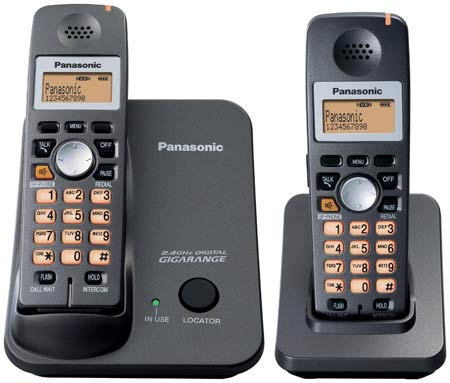Cordless telephone gives freedom to walk around and talk. The main features of cordless telephone include call waiting, speaker phone, redial function, LCD, ringer volume control, conference calling, flash button, headset locator, intercom, digital answering and caller id. There are three types of cordless phones:
•Digital spread spectrum: Spread spectrum technology involves frequency hopping which switches rapidly from one frequency to the next instead of transmitting on one frequency. The spread spectrum technology combined with digital technology makes the communication spy-proof and noise-resistant. In day-to-day life, this technology is seen in cordless telephones and wireless local area networks (WLAN). The main features of this technology are long range power, good sound quality and better security. Due to high transmitter power of around 1 watt, this technology is 7 to 8 times better than the earlier versions.
 The signal sending using this technology uniformly spread over a wide range of frequencies for transmission and avoids interference and noise from other signals. It allows better spy-proof communication due to digital transmissions and constantly changing frequency channels in use.
The signal sending using this technology uniformly spread over a wide range of frequencies for transmission and avoids interference and noise from other signals. It allows better spy-proof communication due to digital transmissions and constantly changing frequency channels in use.•Digital: Most of the advanced digital cordless phone have a good range of about 300 meters outdoors and 50 meters indoor. The phones can be speed dialed by assigning all the commonly used telephone numbers to a button on the phone. The phonebook feature allows to store at least 10 to 255 different telephone numbers and different names can be assigned to them for easy retrieval. Advanced functions like SIM card reader and SMS messaging are found in the advanced cordless telephones. Some cordles phones are VoIP enabled and can work over the internet or with a phone line.
•Analog: Analog technology is a process in which an audio or video signal can be translated into electronic pulses. They are economical in price as compared to the other two, that is, digital spread spectrum and digital cordless phones. The sound quality is also better in analog cordless telephones. Analog phone lines support standard phones, fax machines and modems.
 A number of callers can be added to a single conference call by transferring the incoming calls to the specific extensions.
A number of callers can be added to a single conference call by transferring the incoming calls to the specific extensions.